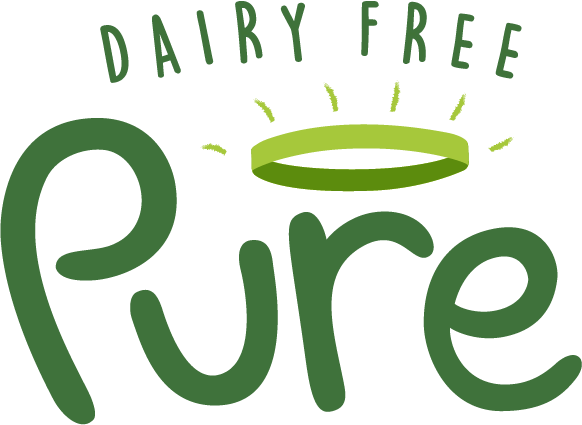Lactose Intolerance vs Dairy Allergy
If you feel bloated, sick and sore after tucking into your favourite dairy dish, there’s a strong chance you suffer from a milk intolerance or allergy.
The symptoms of these conditions range from the uncomfortable to the unpleasant to the downright painful, with severe consequences for those dealing with a serious dairy allergy. There can also be levels of stress involved, forced to whittle down menus, skip dishes and make excuses, many sufferers are apprehensive about visiting restaurants or dining with friends and colleagues.
Of course, the emergence of the dairy free industry has made things that bit easier for those with lactose intolerance or a milk allergy. There’s now a huge range of other options available, such as milk, cheese, yoghurt and our very own dairy free spreads. Restaurants are also growing ever more accommodating to those with specific dietary requirements, and it’s not uncommon to be presented with a menu dedicated solely to dairy free, gluten free or vegan dishes.
But while you enjoy your dairy free alternatives, it’s still important to identify your own individual condition in order to deal with it effectively. The terms lactose intolerance and milk/dairy allergy are often used interchangeably, and while some of their symptoms are similar, they are in fact very different conditions that require different coping techniques.
So what is lactose intolerance?
All animal milks contain the sugar lactose, and in order to digest it our guts produce the enzyme lactase. Lactase breaks down lactose into two sugars, glucose and galactose, which can then be absorbed into the bloodstream. However, some people’s small intestines don’t create enough lactase, making it difficult to digest milk. This leaves the sugar to ferment in your stomach and cause a variety of problems.
Lactose intolerance is often a long term condition that develops in late teens or adulthood, however it’s also common in young children, owed to an infection and soon subsiding.
The Symptoms
Symptoms of lactose intolerance tend to develop within 30 minutes to a couple of hours of eating. They include bloating, stomach cramps, wind, diarrhoea and vomiting, with the severity depending on the amount of lactase your body produces.
Prevention
While cutting out dairy completely is a safe move for those with lactose intolerance, milk products needn’t be totally dismissed.
Depending on your level of lactose intolerance, small amounts of milk and dairy can be consumed without adverse effects. While many lactose intolerances are self diagnosed, visiting your GP is a good idea as you can be prescribed special lactase tablets, topping up your own lactase production and helping to break down the milk sugars. Some sufferers also find that goat’s milk is also much easier to digest than that of cow’s, despite still containing a percentage of lactose.
And what is a milk allergy?
Allergies to milk involve the immune system, with the body responding adversely to proteins such as whey, casein and albumin. When these proteins are consumed, the body identifies them as dangerous and sends itself into defense mode.
The symptoms
Dairy allergy sufferers only require a small amount of dairy to trigger harsh reactions. As with lactose intolerance, bloating, diarrhoea and sickness are common symptoms, however milk allergies also affect the respiratory system, causing shortness of breath and wheezing, as well as the skin, resulting in rashes and eczema. It’s not uncommon to develop a headache or joint pains, too.
Unlike lactose intolerance symptoms, which can take several hours to develop, the results of dairy allergies are sudden and severe.
Prevention
While some types of dairy can still be enjoyed by those with lactose intolerance, allergy sufferers must avoid milk and dairy completely.
If your doctor suspects you have a milk allergy, you will most likely be referred to an allergy specialist for comprehensive tests. Once diagnosed, it’s important to read all food labels carefully and double check when ordering at restaurants, as many foodstuffs contain traces of milk.
If you’re unsure about your symptoms, the best course of action is to visit your GP. It’s important to remember that while lactose intolerance is an enzyme deficiency that can be resolved somewhat easily, milk allergies involve the immune system and can have extreme consequences.
But it’s not all doom and gloom; a dairy free lifestyle is known to be one of the most beneficial, promoting a healthy weight, upping energy levels and improving your skin. And with the wonderful range of dairy free products now on the market, there’s no reason you can’t enjoy delicious food.
